1st generation
Clemens Schürmann
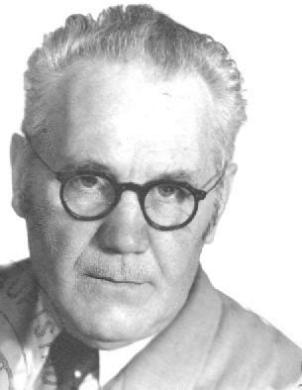
1925 – 1953
Clemens Schürmann as cyclist
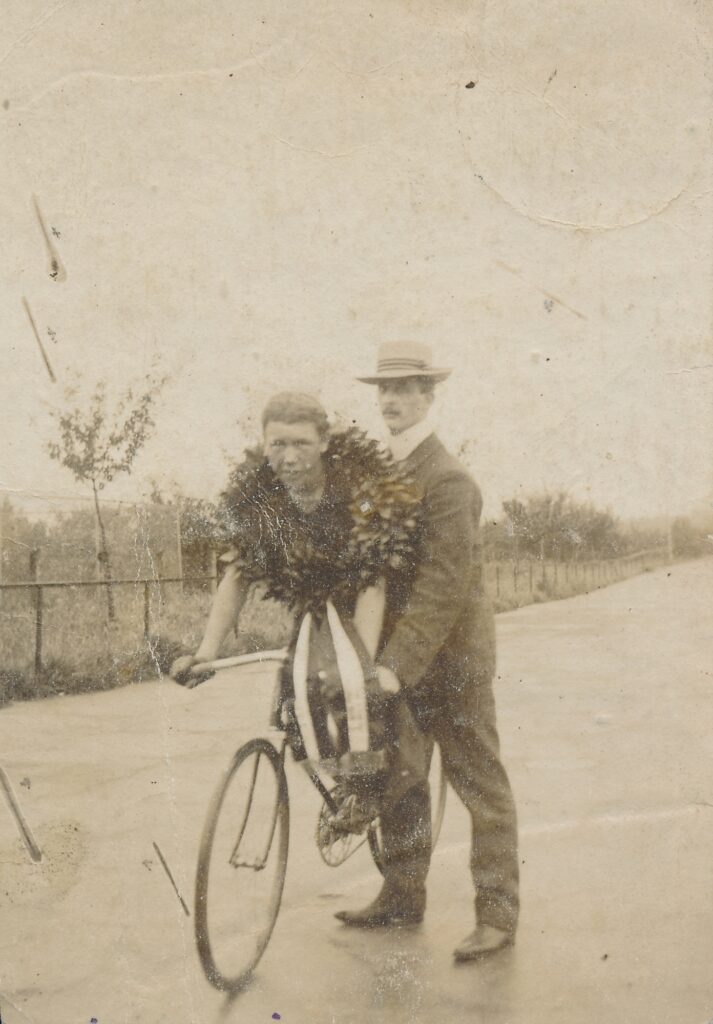
Clemens Schürmann, born in 1888, had the need for cycling already in his blood.
As a young boy he often "borrowed" his brother's bicycle -at this time not everybody had one- just to go and try it out on the nearby open-air concrete velodrome ("Sportbahn") in his hometown Münster. Finally his parents couldn't deny his ambitions and got him his own bike.
Very soon he won all local and regional races and was sent to the World-Championships in Paris already in 1908 at the age of 20.
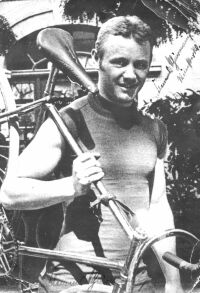
Around 1910 he was already among the best cyclists, his favorite discipline being the sprint. He turned professional and used the money, which he earned in the summer season, to finance his studies of architecture during the winter time.
But when he met his future wife, he had to promise her to stop cycling, since she considered this sport as being far too dangerous.
Wold War I stopped his career and he ended up with a shot through his knee. When he asked his doctor, what he could do to treat his stiffening knee, the doctor strongly proposed pedalling movements of the leg.
! Clemens was back to cycling !
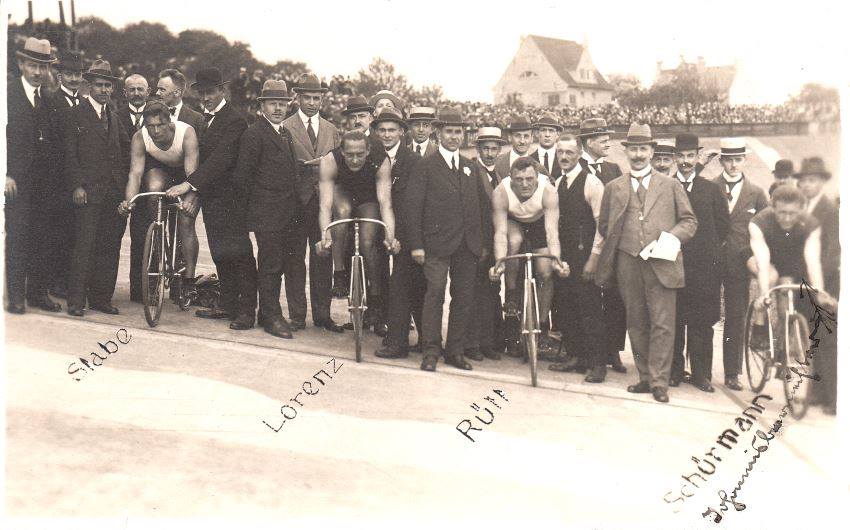
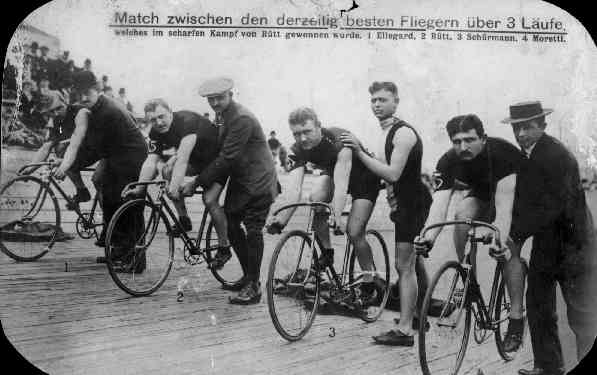
After that he reached the peak of his career. He competed against all international sprint stars of his time (Ruett, Arend, Ellegaard, Jacquelin, Major Taylor etc.) and was considered to be among the top ten of the world sprinters of that time. He took part in the World-Championships 1908 and 1913 and was European Vice-Champion in sprint in 1908 behind Ellegaard.
His muscle packed arms were famous and he did not only once break off the handle-bar of his bike.
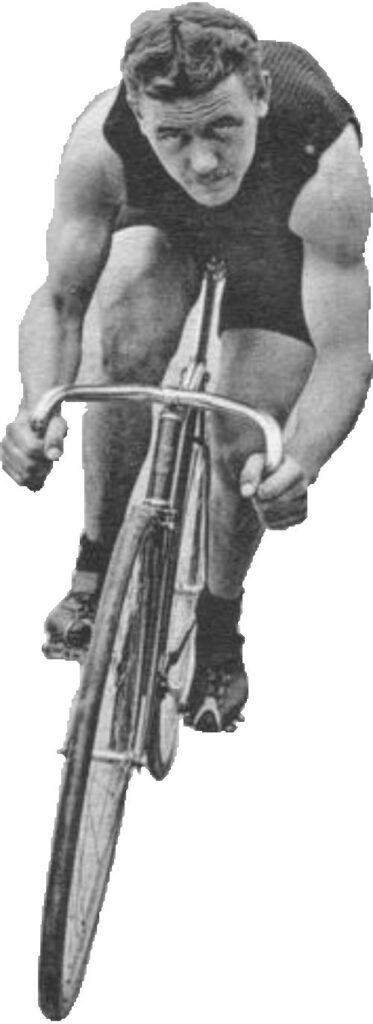
During this time he also invented the first cycling helmet.
After cutting off the top of a police helmet, he covered it with a dark stocking of his wife in order to make it less shiny, and used it furtheron as a protection in his races.
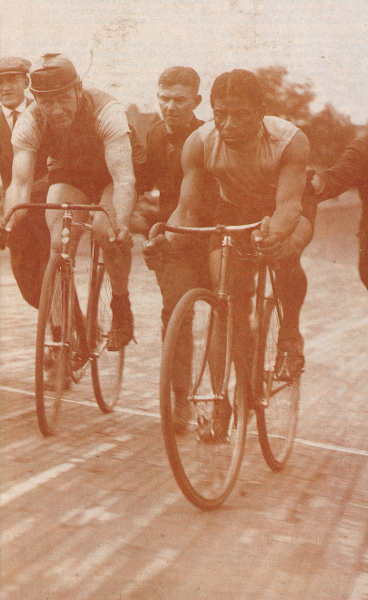
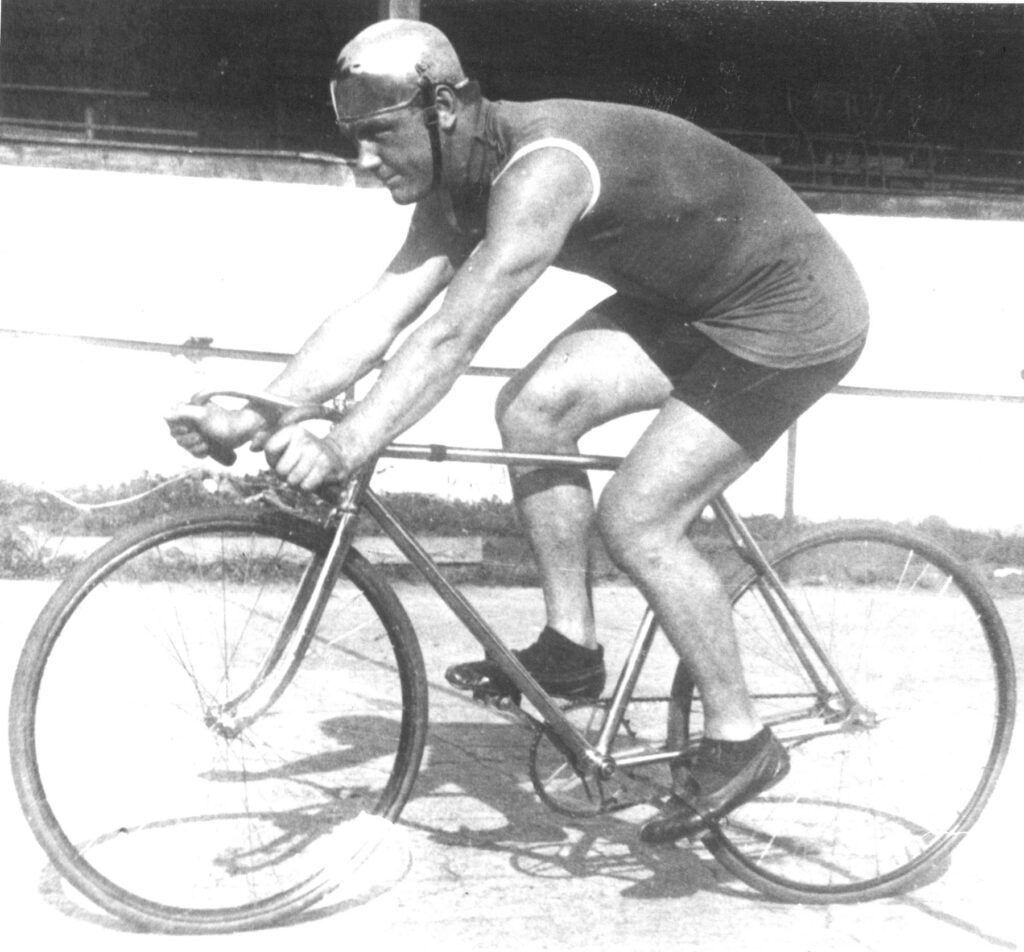
Clemens Schürmann as architect
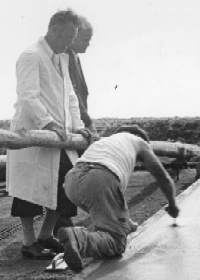
In 1925 he was asked by a cycling club "Clemens, you have been a famous cyclist and now you are also an architect. Couldn't you build a cycle track for us?". And so it all started.
Clemens designed his first cycle track, a 300 m long, open-air track from wood in Krefeld/Germany.
His next task was an indoor cycle track in his home-town Muenster, only 160 m long. This track became his object of evolution. Since he was not satisfied with the form of the track as a rider, he tried all possible variations on this track as an architect.
Each year this track was built up for the winter season and each year he changed the form after his own practical experiences, when he tried it out, still riding himself until 1927. He altered the inclinations and most of all the form of the transitions, which are even more important on shorter tracks.
Against the usual mathematical formulas he changed the transitions in such a way that the riders are led out of the curve by the track itself. He found, that at the location of the highest centrifugal forces the riders should not be bothered with steering, but should be "helped" by the track to stay in the chosen line.
This is the reason why the riders feel so well on Schürmann tracks and why they are able to produce their best performances on them.
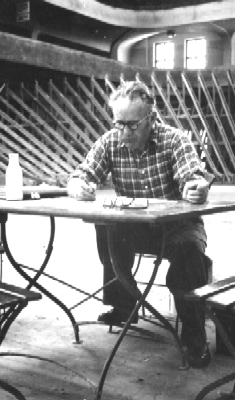
Within the following 28 years -interrupted by World War II- he built as many as 44 tracks in Germany and the neighbouring countries. With tracks of length's from 153 m to 500 m, indoors and outdoors, from wood and from concrete he gathered the knowledge and profound experience, which laid the foundation stone for an ongoing tradition.
His certainly most famous track was the "Vigorelli"-track in Milan, Italy (1936). Practically all world records of that time and the following years were broken on this track and it was THE location of world-record-attempts for many, many years.
Clemens Schürmann as sport director
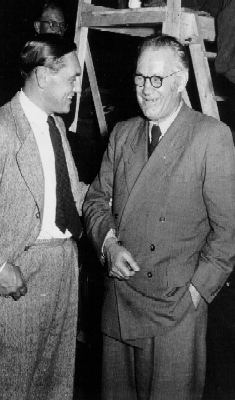
In his later years Clemens Schürmann also was asked to be the sport director of the 6-day-races in his hometown Münster.
Educated in the spirit of the last century and as an active believing catholic he guided the races in a very pure manner of sport. Knowing all tricks of the business he was a very strict and severe director, but very much evaluated and respected by the riders of this time.
During the 6-day-race of 1952 he suffered a stroke and in 1957 Clemens Schürmann died at 69 years of age.
If you are interested to read more about Clemens' time as a cyclist please refer to :
https://radsportgalerie.schuermann-muenster.de/

